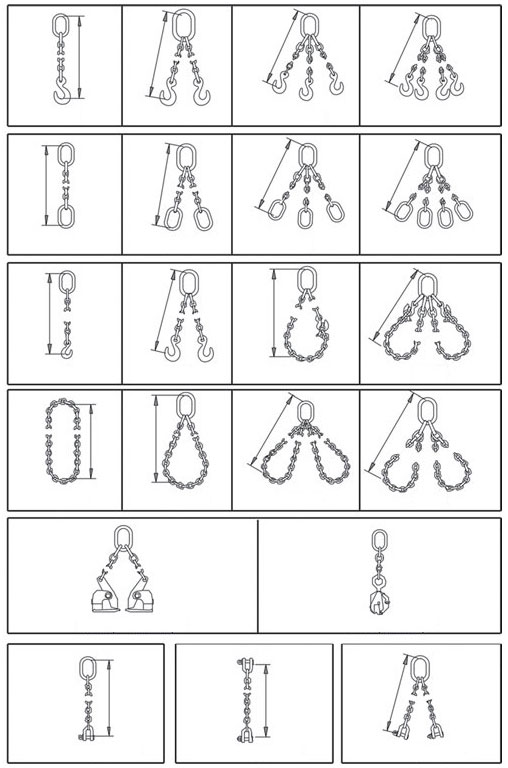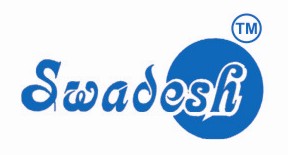Product Descripation
Single Legged Chain Sling:
As the name implies, there is only one chain leg to this type of sling. It consists of a master link, a length of alloy chain, and a hook (there are three types of hooks — eye hooks, Single Legged: any of which can be selected depending on the application). The total weight of the load is carried by the single chain sling. The angle of lift is 90 degrees, and the weight of the load can equal the full working load limit of the chain. As per standard IS 2760/1980,

Two legged chain slings:
Consisting of two chain legs both connected to a master link at one end and each leg attached to a hook at the other end, the double chain sling is generally used for more applications than any other type. As per standard IS 2760/1980
Two legged chain slings:
The three legged chain sling is often used to improve stability of the load when lifting (load control). As per standard IS 2760/1980


Four legged chain slings:
A four-legged chain sling has the same rating as a triple since the load is seldom evenly distributed on a quadruple sling. The fourth leg is frequently needed to stabilize a load during the lifting operation. As per standard IS 2760/1980
We offer premium quality chains made from grade 80 alloy steel for lifting application & grade 30 chains to be used as hand chains. We offer our clients with a high quality range of chain slings. These are manufactured using permanent, welded coupling links, mechanical coupling links and others. These chain slings are used in various industries.

Specifications:
• Available in different sizes
• Manufactured as per IS specifications and grade 30/63/80 & above
• Various end fittings possible
Features:
o Abrasion and cut resistant
o Average elongation and shock resistant
We also offer higher grade chains and chain slings made from grade 100 and 120 alloy which are having more SWL compared to a same dimension chain of grade 80, and can withstand a temperature up to 380 degree centigrade
Knowledge
Lifting equipment is everything used to connect a load to the crane hook, i.e. wire rope slings, chain slings, round slings, webbing slings, lifting beams etc.
WLL (Working Load Limit) is the maximum mass that the lifting equipment is authorized to sustain in general lifting service.
BF (Breaking Force) is the maximum force reached during the static tensile test.
SF (Safety Factor) is the relationship between breaking force and WLL. Note! The safety factors for chain, steel wire rope and soft slings differ.
MPF (Manufacturing Proof Force) is the force to which lifting equipment or components are tested prior to delivery, by the manufacturer.
DOS AND DON’TS FOR CHAIN SLINGS
DOs
• Select correct size of sling for the load, taking into account the included angle possibility of unequal loading in case of Multi-Leg Slings"
• Ensure that chain slings are not twisted,
• Ensure the load is fully supported in the bowl of the hook, not on tip.
• Avoid snatch or sudden loads.
• Get your slings inspected by competent person at regular intervals
• Keep register for all slings in use.
DON’Ts
• Do Not Leave slings on the floor when not in use. Hang them on hook.
• Do Not Use sling over sharp corners without protective padding.
• Do Not Trap the sling under a load.
• Do Not Use slings which are torn, bent, corroded, locked, stretched or damaged.
• Do Not Knot a chain.
• Do Not Heat treat grade 80 slingsthis is unnecessary & could bedangerous.


